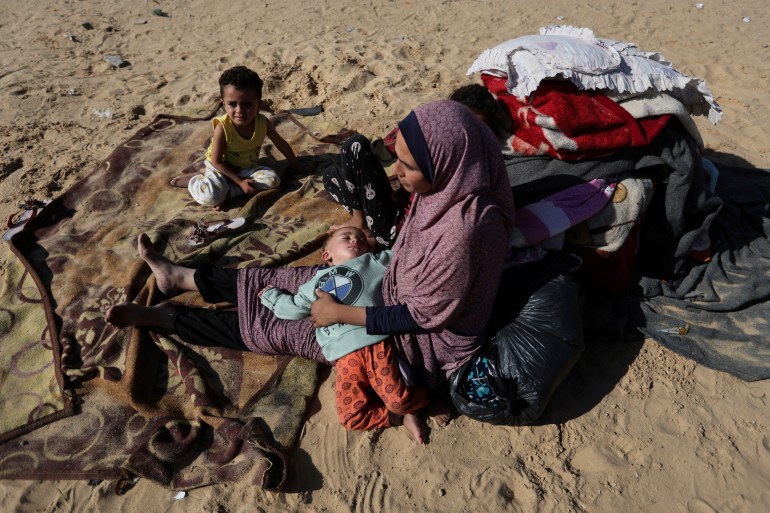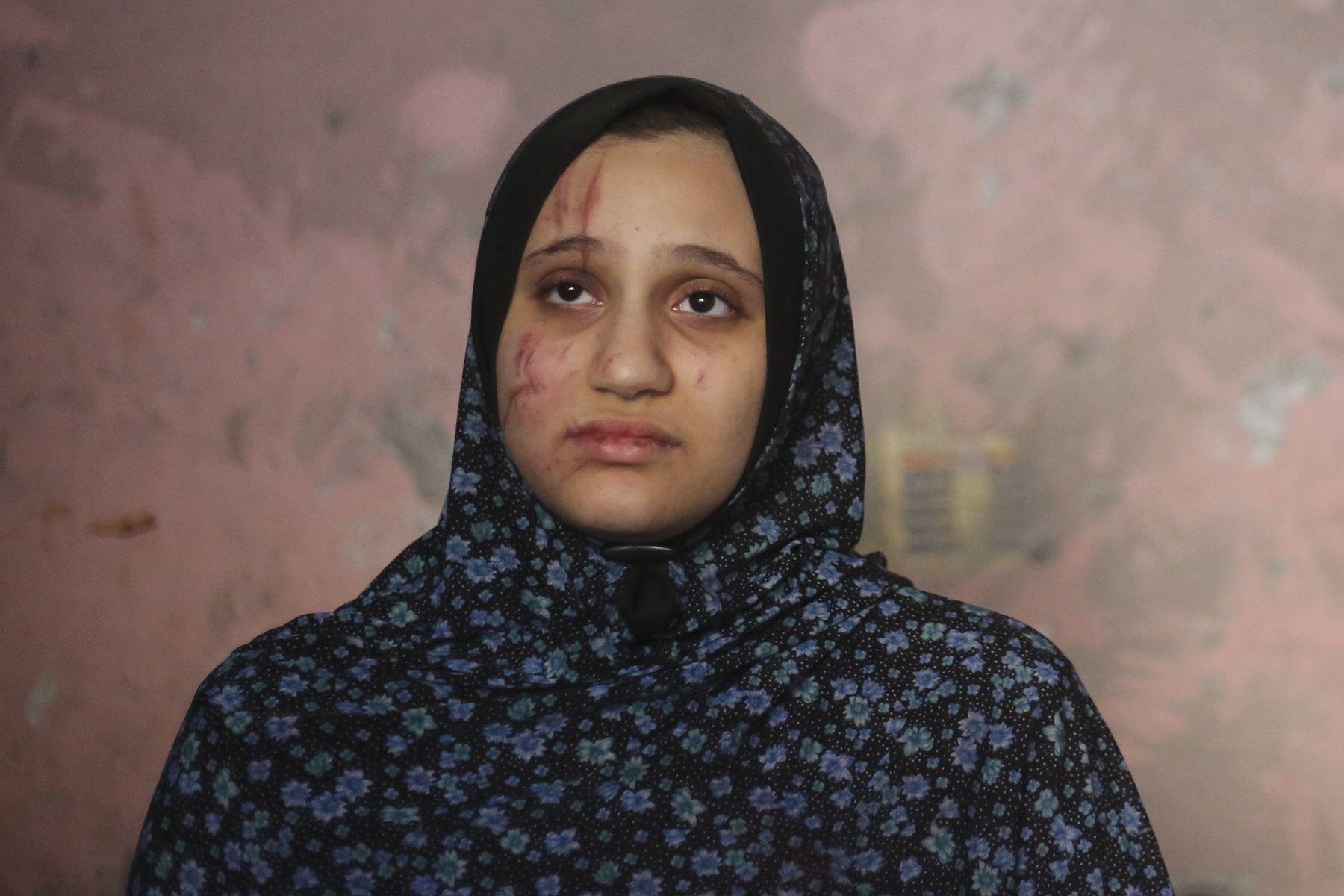Al-Fukhari, Gaza Strip – It’s a garment that the world may have grown accustomed to seeing Palestinian women in Gaza wearing as they flee for their lives, hold their murdered children or loved ones close for one final goodbye, or run frantically through hospital corridors hoping to find their loved ones injured, not dead.
Muslim women will recognise it as a prayer cover-up, known as an “isdal” or “toub salah”, and it is what women and girls have pulled around them at the most difficult moments that the current Israeli war on Gaza has wrought.
An isdal can be one piece that covers the whole body except for the face or two pieces with a skirt and a veil that covers the wearer past the hips. Every practising Muslim woman’s home has at least one, an essential item at all times.
In addition to prayer time, a veiled woman may pull this on to answer the door when male guests arrive with no advance notice – or even if they’re just running around the corner to buy something or stepping out to chat with a neighbour.
A wartime companion
The isdal is a comfortable item to throw on top of whatever a woman is wearing if she has to leave the house in a hurry and remain modest.
But during the war, Palestinian women are wearing it around the clock, at home or out, asleep or awake, because they have no idea when a bomb will strike their house and they will have to run, or worse.
“If we die when our house is bombed, we want to have our dignity and modesty. If we’re bombed and have to be rescued from the rubble, we don’t want to be rescued wearing nothing,” Sarah Assaad, 44, says.
Sarah lived in Zeitoun in eastern Gaza City and has been displaced to the school in al-Fukhari with her three daughters and two sons, all of whom are teenagers.
She adds that the isdal is worn around the clock by the terrified women and girls in the school, which is crammed with displaced people.
“I have three of them, my daughters each have at least one. We’ve gotten used to this in the past 17 years of different Israeli assaults. When the first missile falls on Gaza, we put our isdals on.”
Fifty-six-year-old Raeda Hassan, from east of Khan Younis, says she has kept her isdal close throughout the many wars Gaza suffered, to the point where, she adds, she does not like the sight of it sometimes because it reminds her of violence.

“The first thing I’m going to do after the war is to get rid of this and buy a different one so I’m not reminded of the suffering of war,” Raeda says, gesturing down at her isdal.
She is also at the school with her daughters and daughters-in-law, who are all wearing their isdals as well.
In fact, Sarah says, the isdal is so ubiquitous that girls who are too young to pray or take the veil have been demanding that their mothers buy them isdals anyway.
Sahar Akar’s daughters are only four and five years old, but wanted isdals so they could be like their cousins and the older girls they saw around them.
Sahar, 28, fled to the south of the Gaza Strip with her family from Gaza City.
‘You never know what might happen’
Raeda muses for a moment then exclaims: “I don’t know where everyone gets this idea that we’re somehow prepared to be bombed.
“First of all, what does that mean? To be prepared to have your home, history, memories destroyed? Who on earth can say that’s something you should be prepared for?
“Anyway, we don’t know where the bombs are going to fall, or which home will be obliterated. We keep this isdal on so we can run out and look for our kids if they wander too far. We wear it when we run to our neighbours’ places to see if they’re OK after a bombing.
“If I see my daughters or any of the family’s women without their isdal, I tell them to put it on, you never know what might happen.”
Raeda’s 16-year-old daughter Salma sits nearby, nodding vigorously and dressed in her isdal. She remembers the day in early September when she and her mother went out to the Shujayea market and she spotted a “cute” isdal she just had to have, and Raeda bought it for her.
“I love it very much and like wearing it because it reminds me of that day when we wandered in the market and had so much fun,” she adds.
“When we fled, I was wearing trousers and a shirt but I took my isdal with me so I could pray. Once we got here and I saw how crowded it was and how every single woman was wearing an isdal, I figured I should keep mine on all the time.
“It’s sad because prayer covers have happy associations also, a crisp, new, colourful veil for Eid prayers, even an isdal pulled on in a hurry to wait for your kids to jump off the school bus and tell you about their day. That’s all been ruined,” Salma continues.
For many other women who spoke to Al Jazeera, the isdal carries mixed feelings as a symbol of panic in the street as well as the quiet moments of prayer and reflection.
In wartime, the simple act of covering their heads has become loaded with a deep weight of sadness.
Check out our Latest News and Follow us at Facebook
Original Source

